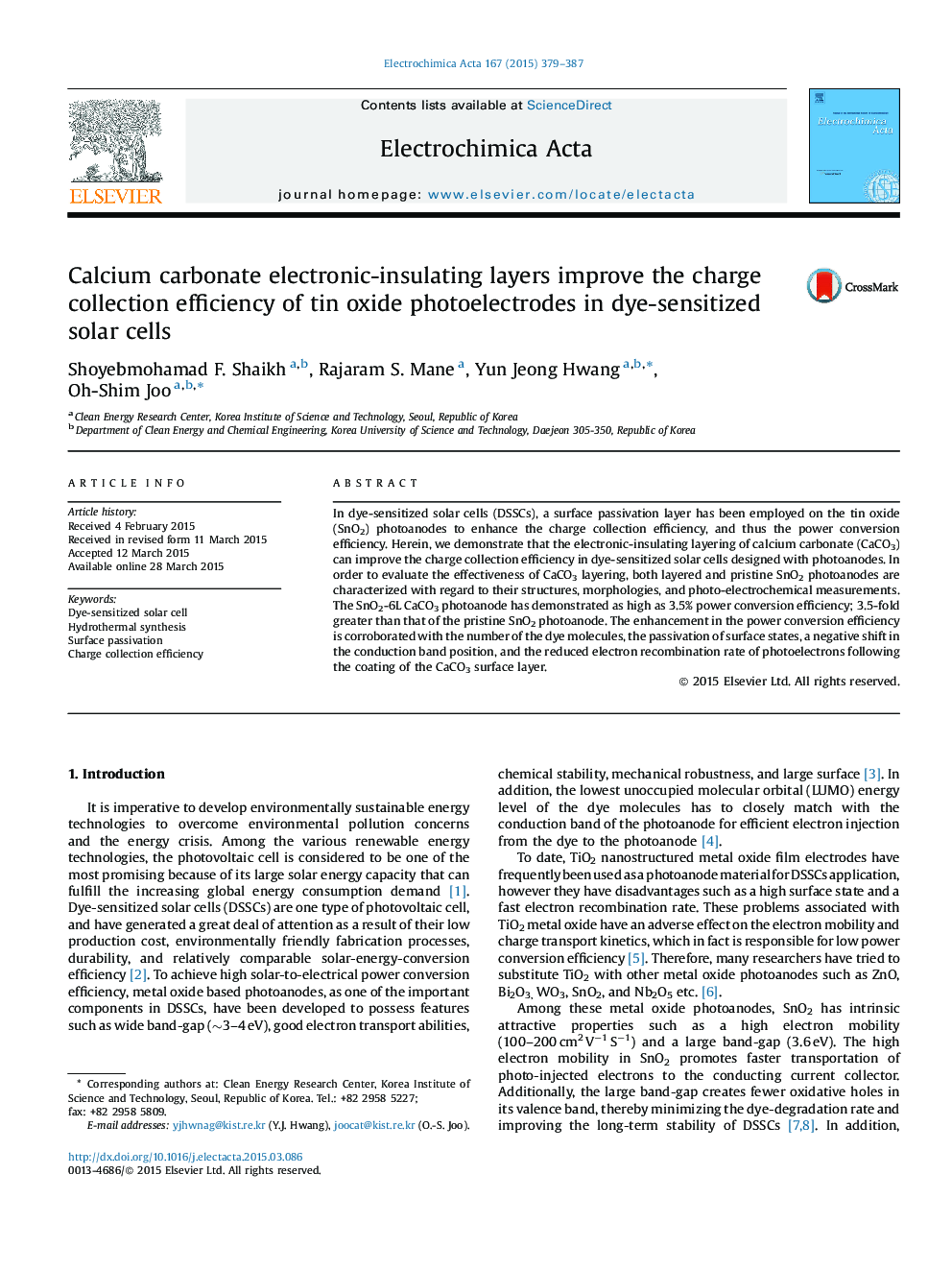| Article ID | Journal | Published Year | Pages | File Type |
|---|---|---|---|---|
| 184365 | Electrochimica Acta | 2015 | 9 Pages |
In dye-sensitized solar cells (DSSCs), a surface passivation layer has been employed on the tin oxide (SnO2) photoanodes to enhance the charge collection efficiency, and thus the power conversion efficiency. Herein, we demonstrate that the electronic-insulating layering of calcium carbonate (CaCO3) can improve the charge collection efficiency in dye-sensitized solar cells designed with photoanodes. In order to evaluate the effectiveness of CaCO3 layering, both layered and pristine SnO2 photoanodes are characterized with regard to their structures, morphologies, and photo-electrochemical measurements. The SnO2-6L CaCO3 photoanode has demonstrated as high as 3.5% power conversion efficiency; 3.5-fold greater than that of the pristine SnO2 photoanode. The enhancement in the power conversion efficiency is corroborated with the number of the dye molecules, the passivation of surface states, a negative shift in the conduction band position, and the reduced electron recombination rate of photoelectrons following the coating of the CaCO3 surface layer.
